calsfoundation@cals.org
Arkansas Centennial Commemorative Half Dollars
The United States Mint issued two silver half dollars commemorating the 1936 centennial of Arkansas’s statehood. These coins are currency of the United States authorized by acts of Congress on May 14, 1934, and June 26, 1936. The first coin was issued beginning in 1935 and features the profiles of an Indian chief of 1836 and a young woman of the 1930s, the archetype of Lady Liberty. The second coin, released after the first, features a profile of Senator Joseph T. Robinson. Both coins feature an eagle and an Arkansas flag motif. More than 100,000 coins (including both designs) were minted.
On July 27, 1934, Charles Moore, who was serving on the United States Commission of Fine Arts, in a letter to the acting director of the United States Mint, noted the commission’s disapproval of a sketch done by artist Edward Everett Burr, who had won the contest to design the coin, “because of unsuitability for a coin of the United States.” Senator Hattie Caraway pursued this issue, and on August 31, H. P. Caemmerer, secretary of the U.S. Commission of Fine Arts, provided further explanation, saying that “satisfactory design for a coin or a medal is one of the most exacting things an artist can be called upon to do.”
On September 18, Secretary Caemmerer wrote to Senator Caraway noting the commission’s support for having Burr continue in his role as designer along with a request a new design for both sides of the coin. The new design would change the portraits of the Indian chief and the young woman from a frontal view to overlapping profiles, and the entire coin would be redone to meet higher technical and aesthetic standards. In the same letter, he advised: “After the designs are approved by the Commission of Fine Arts, it is understood that the models will be made by Miss Emily Bates in the studio of Lorado Taft, sculptor, of Chicago, Ill.”
Unlike how it is done for most United States coins, the portraits are on the reverse side or “back” of the coin. The obverse or “front” of the both coins was designed by Burr and features an eagle and an Arkansas flag motif, which is visually more typical of the reverse side of a coin. These features are included on the front of the coin so it could also contain the date and the inscriptions “United States of America” and “Half Dollar,” along with the mottos “In God We Trust” and E Pluribus Unum. The eagle is in a defensive position in front and below the diamond area of the Arkansas flag.
Charles Moore notified Mint Director Nellie Taylor Ross that the models were approved “upon recommendation of the sculptor member of the Commission.” With the final approval of the mint director, the first of the Arkansas coins was minted.
In 1935, 13,012 Arkansas centennial coins (the first design, not the Robinson coins) were minted in Philadelphia, Pennsylvania; 5,505 coins were minted in Denver, Colorado; and 5,506 coins were minted in San Francisco, California. In 1936, these three mints issued 9,660, 9,660, and 9,662 coins, respectively, and they issued 5,505, 5,505, and 5,506 in 1937. In 1938, they issued 3,156, 3,155, and 3,156, followed by 2,104, 2,104 and 2,105 in 1939. These numbers represent net coinage and do not include coins that were melted at the mint.
The coins were sold at a premium, with the funds going to the Arkansas Centennial Commission.
The commission’s comptroller’s report of December 23, 1936, stated that “we have not attempted to verify any prices, quantities, or delivery of any merchandise or printing, or any charges of any nature other than the salary of the Director, Mr. Rogers, which is evidenced by a contract, and specified a salary of $5,000.00 and for rental of library $5,000.00.” This report listed coin sales at $38,730.48 on November 30, 1936. Coins continued to be issued until 1939.
The second coin, featuring Robinson, was approved by the Commission of Fine Arts on December 23, 1936. The front includes the same features as the first coin, and the reverse side features the senator’s portrait, designed by Henry Kreis. The Centennial Commission had the idea to have the coin honoring Robinson after the Texas Centennial Commission sponsored legislation to authorize a set of five coin designs, although the Texas legislation did not pass.
The second coin legislation stated that the Robinson coins “shall bear the date 1936, irrespective of the year in which they are minted or issued.” A total of 25,265 Robinson coins were minted in 1937. The Robinson coins are unusual among United States coinage because they were minted when the subject pictured on the coins was still alive. Senator Robinson died on July 14, 1937.
For additional information:
American Numismatic Society. http://numismatics.org (accessed September 12, 2019).
Arkansas Centennial Commission. Progress Report. 1937
Dannreuther, John W. Official Guide to Coin Grading and Counterfeit Detection, edited by Scott A. Travers. New York: Random House, 2004.
Slabaugh, Arlie R. United States Commemorative Coinage. Racine, WI: Whitman Publishing, 1963.
Taxay, Don. An Illustrated History of U.S. Commemorative Coinage. New York: Arco Publishing Company, 1967.
United States Mint. https://www.usmint.gov (accessed September 12, 2019).
Yeoman, R. S. A Guide Book of United States Coins. Pelham, AL: Whitman Publishing, 2017.
Allen McMillan
Little Rock, Arkansas
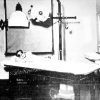 Early Twentieth Century, 1901 through 1940
Early Twentieth Century, 1901 through 1940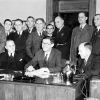 Politics and Government
Politics and Government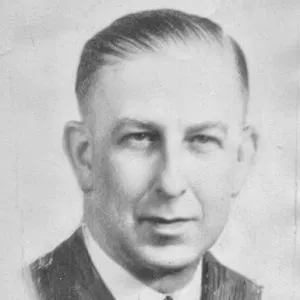 Everett Burr
Everett Burr  Centennial Robinson Half Dollar
Centennial Robinson Half Dollar 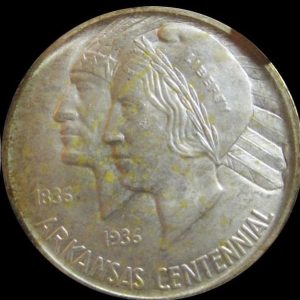 Centennial Half Dollar, First Design
Centennial Half Dollar, First Design 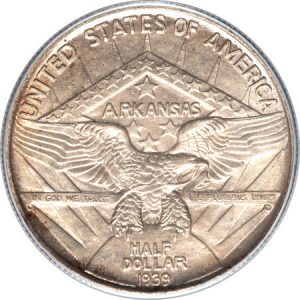 Centennial Half Dollar, Front
Centennial Half Dollar, Front  Couch in Washington
Couch in Washington 



Comments
No comments on this entry yet.